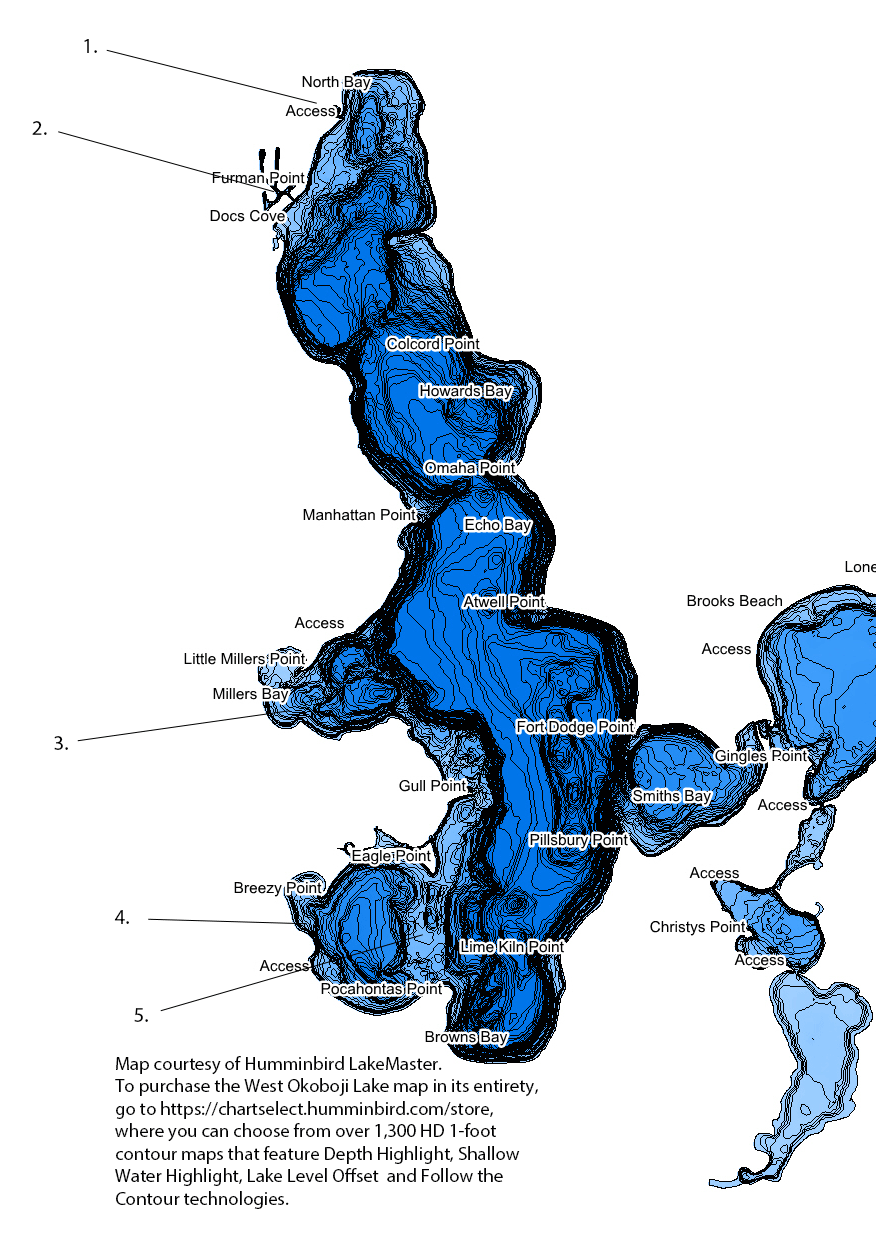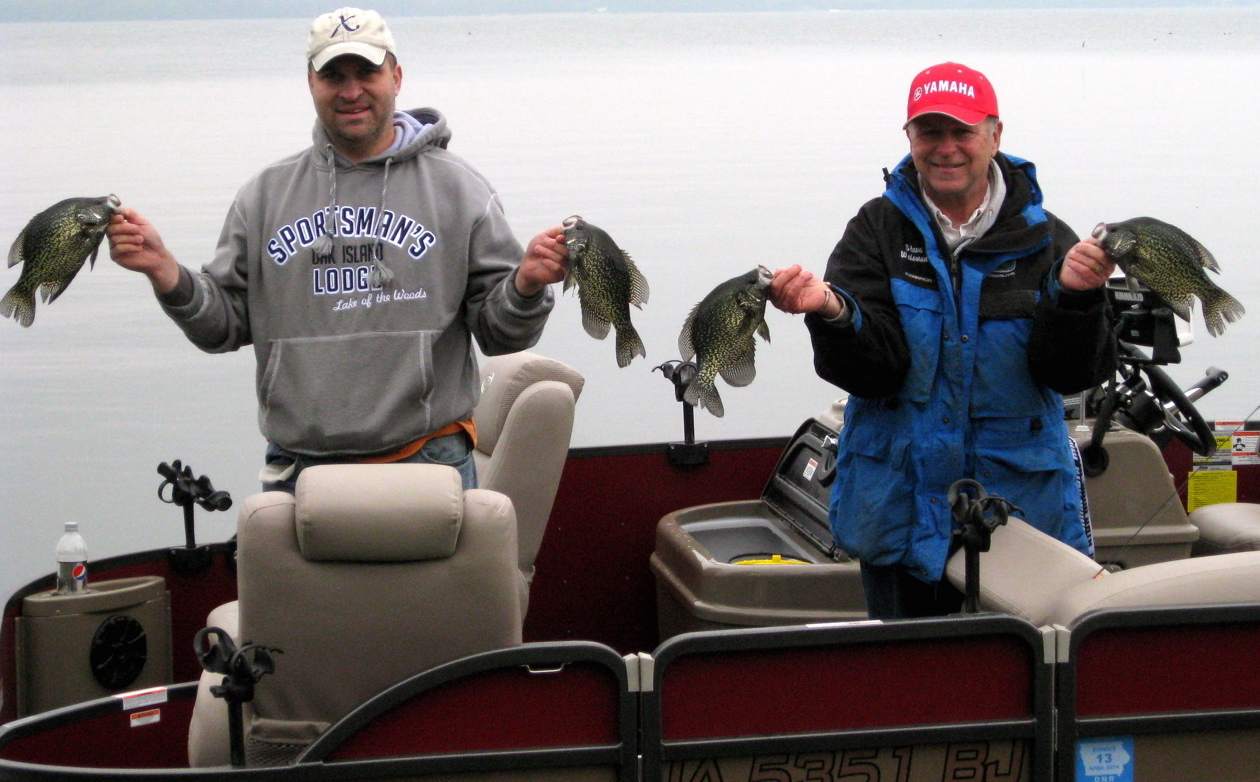
Iowa’s Great Panfish Lake
Iowa’s Great Lakes is a chain of natural, glacial lakes located in the state’s northwest quadrant. Noted for clear water and an abundance of popular sportfish, they cover nearly 14,000 acres. Three primary lakes, Spirit, East Okoboji, and West Okoboji, account for more than 80 percent of the total surface area.
While walleyes, small- and largemouth bass, muskies, northern pike, and catfish are all popular targets in these waters, the focus is on panfish in this week’s featured lake—West Okoboji.
Offering nearly 3,900 surface acres, West Okoboji is the second largest, behind Spirit Lake, in the chain. Its average depth is 38 feet, with a maximum of 136. It features numerous coves and bays that often offer protection from wind and waves on blustery days. Shorelines feature steep breaks that drop into the mid-lake depths.
Northland pro team member, outdoor writer, and panfish specialist Steve Weisman says the lake is an outstanding destination for year-round bluegill and crappie action. Open-water fishing begins as soon as the ice vanishes, and though spots he calls out are at the top of his list, anglers can find similar areas elsewhere around the lake as well.
His tackle choices and presentations center on small jig heads, live bait or panfish plastics, and where appropriate a small slip bobber. Among his go-to jigs in all the spots he mentions are the Gill-Getter®, Bro Bug® always tipped with a waxworm, Impulse® Bro’s Bloodworm, or live worm.
“The advantage of using plastics is that you can catch multiple fish on one bait—without having to restock the hook after every fish,” he says. “In the early season, use a straight plastic body with minimal or no appendages, such as the Impulse® Bro’s Slug Bug, and make sure it’s centered on the hook so the jig doesn’t spin as it hangs under the float.”

1. Water in the doughnut-shaped Lazy Lagoon at the Tribogi boat ramp on the lake’s northwest end warms quickly just after ice-out, and is a key spot for early crappies and bluegills. Fish size 12 to 16 jig heads tight to the boat docks along the lagoon’s outer edge. Public docks allow anglers to fish afoot, dropping jigs straight down along the structures. Later on, fish jig-and-slip bobber rigs away from the docks.
2. The Harbour is another protected area lined with private docks and access to boat fishermen. Fish jigs tipped with natural or soft plastic baits under a slip bobber for early-season crappies and ‘gills. Another option is a chartreuse hook baited with a crappie minnow. Panfish will likely be visible if the water’s clear, otherwise side-finding sonar will help in pinpointing docks that hold panfish.
3. Miller’s Bay: From ice-out to mid-May concentrate on fishing the many docks and hoists lining its shoreline using the same jigs and presentations already mentioned. The canal leading south from the bay, all the way to and including Turtle Lake, features warm, shallow water and plenty of boat docks that provide prime early-spring panfish action as well. On warm, calm days, cast out away from the docks into the deeper water.
4. Emerson Bay offers fishable docks that draw panfish soon after ice-out, but the action continues through the spawn. When water temps reach 65 degrees, look for bedding ‘gills, especially in the bay’s southwest quadrant and along the north shoreline out from Crescent Beach. Look for beds in the 10-foot range in the clear water and drop a jig-and-worm into active beds. Weisman prefers a leaf worm or Belgian worm, explaining that they are livelier than a half-crawler or redworm.
5. Post-spawn fish the area between Eagle Point on the north side of Emerson Bay and Pocahontas Point to the south using the jig heads already mentioned, tipped with a worm, waxworm, or soft plastic bait, drift along the bar at a depth where weeds are beginning to emerge from the bottom and keep the jig just above the weed tops. A small split shot pinched on just above the jig, may be needed if the drift is too fast.
From mid-June through September, focus on deep weedlines in Emerson and other bays around the lake. These often drop into 20-30 feet. Straight-line a jig-and-worm or jig-and-soft plastic over the side along the deep edge. To avoid small fish, Weisman often jigs a small Buck-Shot Rattle® or Forage Minnow® Spoon loaded with waxworms or silver wigglers. A live leech under a slip bobber often takes walleyes, smallmouths, largemouths, crappies, and some huge bull ‘gills as well.
Map courtesy of Humminbird LakeMaster. To purchase the West Okoboji Lake map in its entirety, go to ChartSelect, where you can choose from over 1,300 HD 1-foot contour maps that feature Depth Highlight, Shallow Water Highlight, Lake Level Offset, and Follow the Contour technologies.

